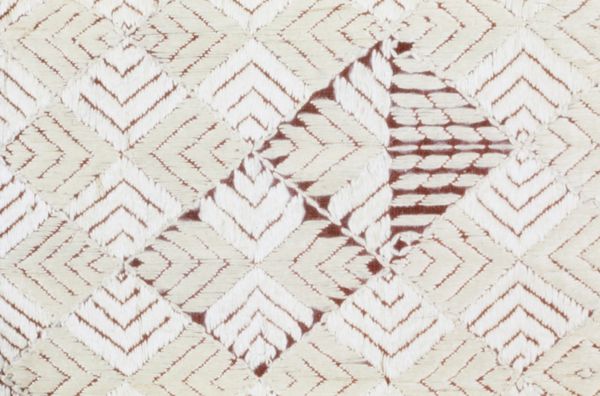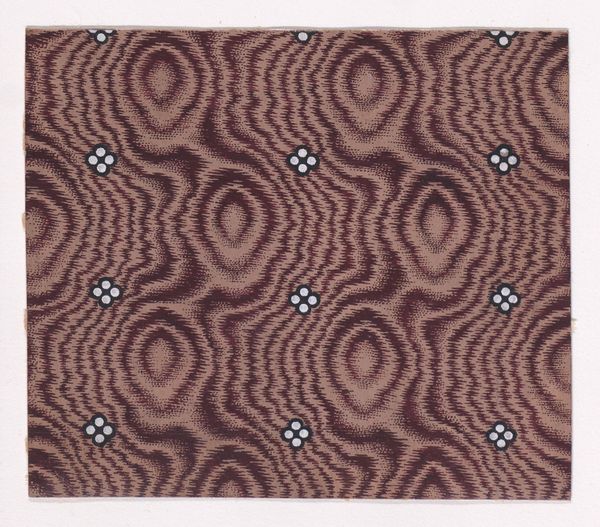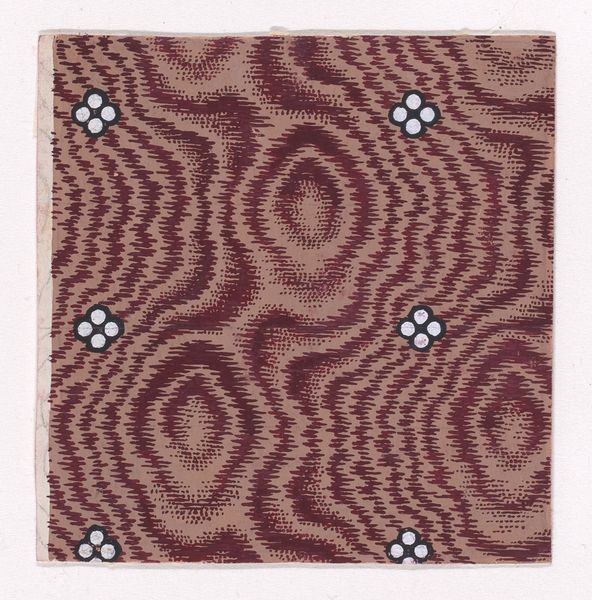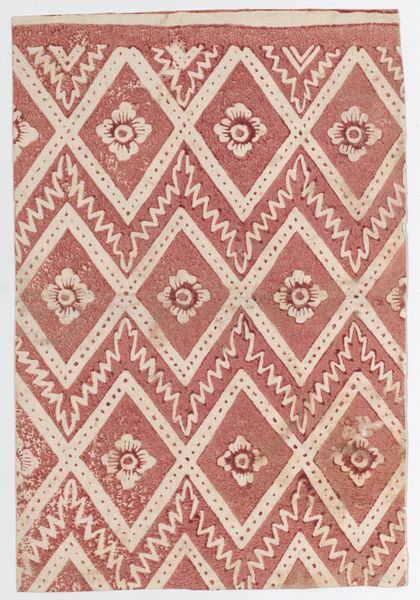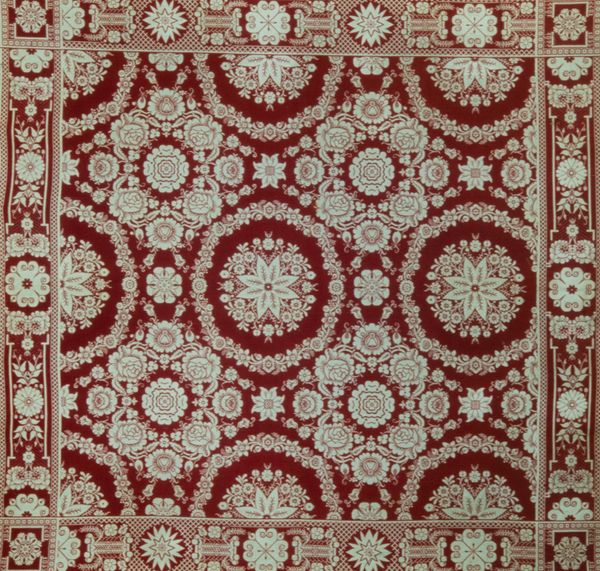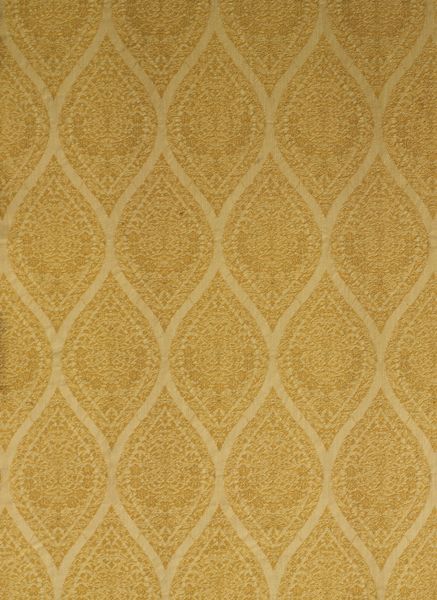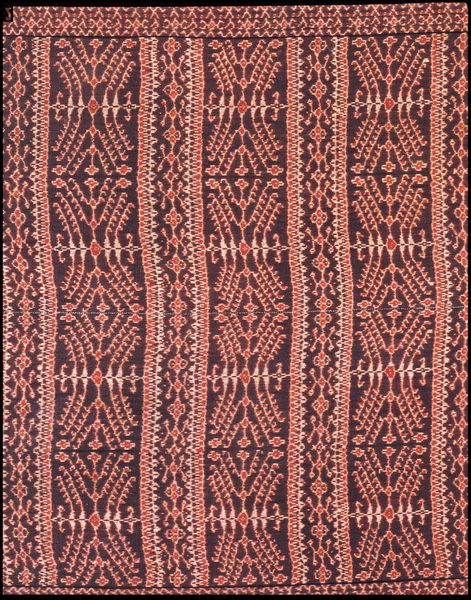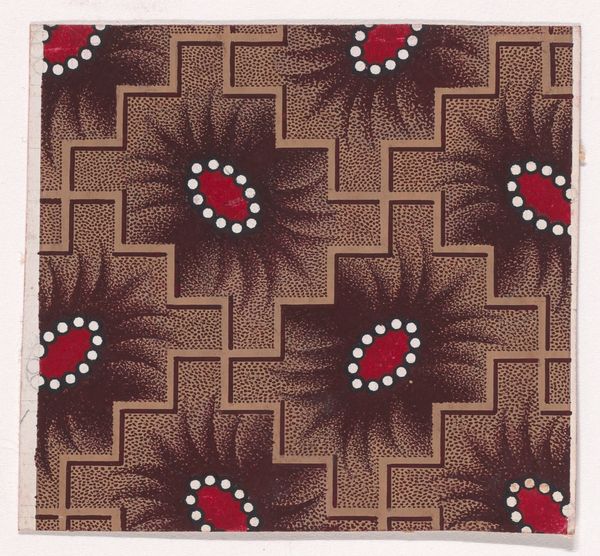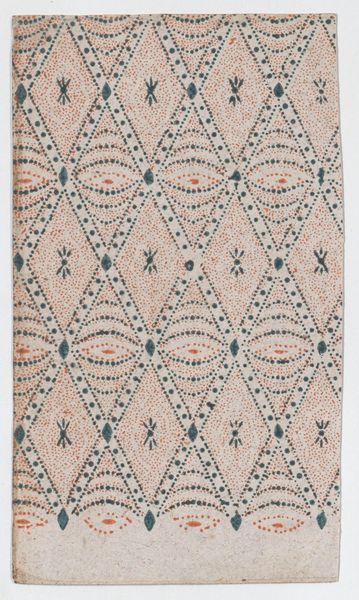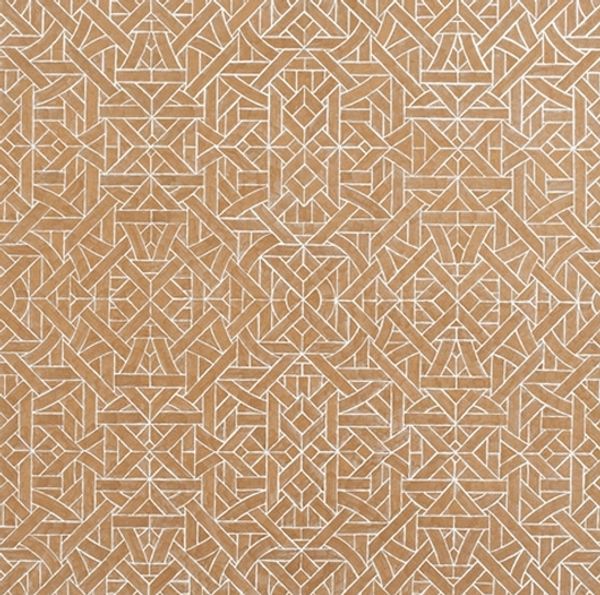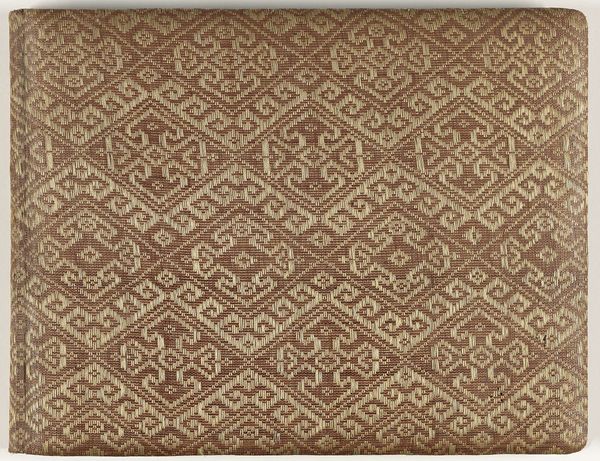
fibre-art, panel, weaving, textile
#
african-art
#
fibre-art
#
panel
#
weaving
#
textile
#
geometric pattern
#
geometric
#
geometric-abstraction
Dimensions: 12 3/4 x 26 in. (32.39 x 66.04 cm)
Copyright: Public Domain
Curator: Here we have a Kuba panel, its precise date is unknown, from the Minneapolis Institute of Art. Immediately, it speaks to textile art traditions with geometric designs. What’s grabbing you? Editor: Its visual rhythm. Alternating shapes create such a unique sense of movement, doesn't it? Like a structured dance. Curator: Kuba textiles are remarkable. They weren’t made on a whim; their weaving served social, cultural, and economic purposes. Each textile, a record of collective knowledge, weaving traditions, and societal events. Editor: True, the formal arrangements do offer more. This emphasis on woven texture – like handwriting, revealing artistic intent. And the choice of subdued earthy hues, giving this 'Panel' an immediate feel of serenity, don’t you agree? Curator: I agree completely. Consider raffia as the chief material. Production would have taken intense physical effort with natural dyes influencing visual language with specific cultural weight. So a single glance would reflect collective identity. Editor: It does highlight texture’s importance in artistic meaning. Its rough yet refined pattern brings organic yet geometric feelings that contrast so well, offering formal tension! Curator: Precisely. The consumption process also deserves examination: a piece meant for ceremonial uses reflects larger political contexts through patronage, wealth and community position within the kingdom Editor: Agreed. The closer one examines the piece, it reveals underlying structures which enable rich appreciation with philosophical interpretation beyond straightforward representation… Curator: A dialogue then. It is where aesthetic appreciation integrates histories of technique, materiality and political intent that reveals its artistic vision… Editor: Exactly—form guiding cultural expression and a reminder to appreciate not just visual qualities but conceptual dimensions inherent in artworks.
Comments
minneapolisinstituteofart almost 2 years ago
⋮
Finely crafted cut pile embroideries are objects of great prestige in Kuba society. Although men and women contribute equally to the production of raffia textiles, this particular form of surface ornamentation is worked only by women. The finest cut pile embroideries, as in this example, combine a flat stem stitch with a tufted plush stitch, resulting in a distinct texture that enhances the overall design of the piece. Patterns used for Kuba embroidery are drawn from over 200 traditional motifs that are also used for woodcarving, basketry, and ceramics. Kuba artists rarely replicate designs exactly, but rather use them as a basis for improvisational experimentation.
Join the conversation
Join millions of artists and users on Artera today and experience the ultimate creative platform.
